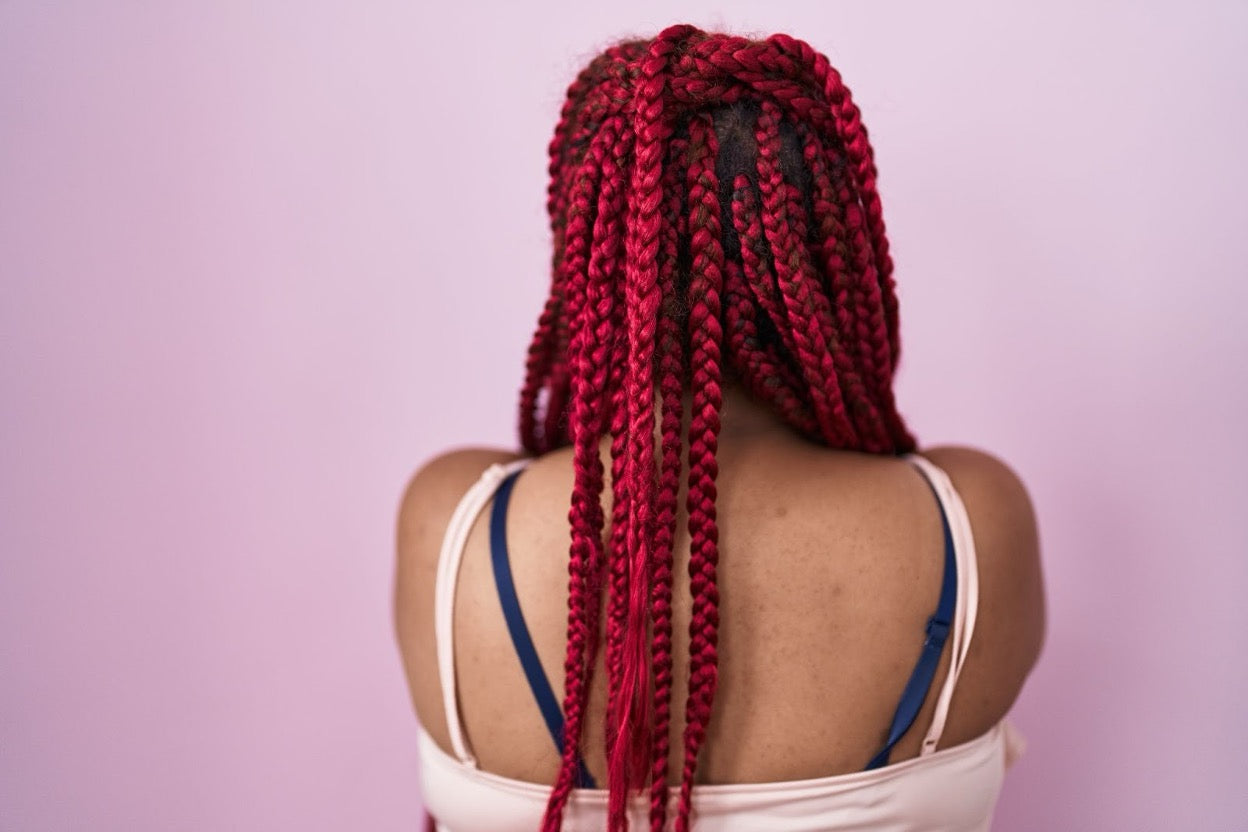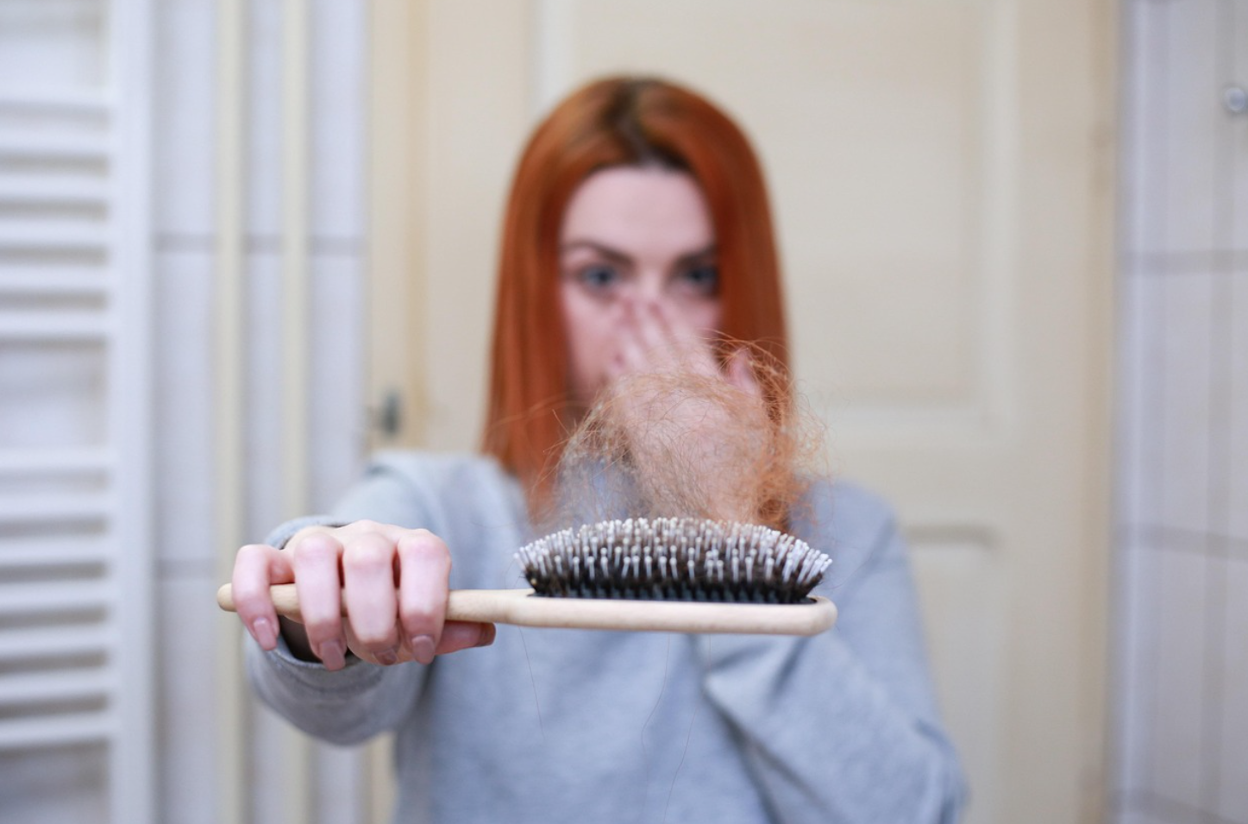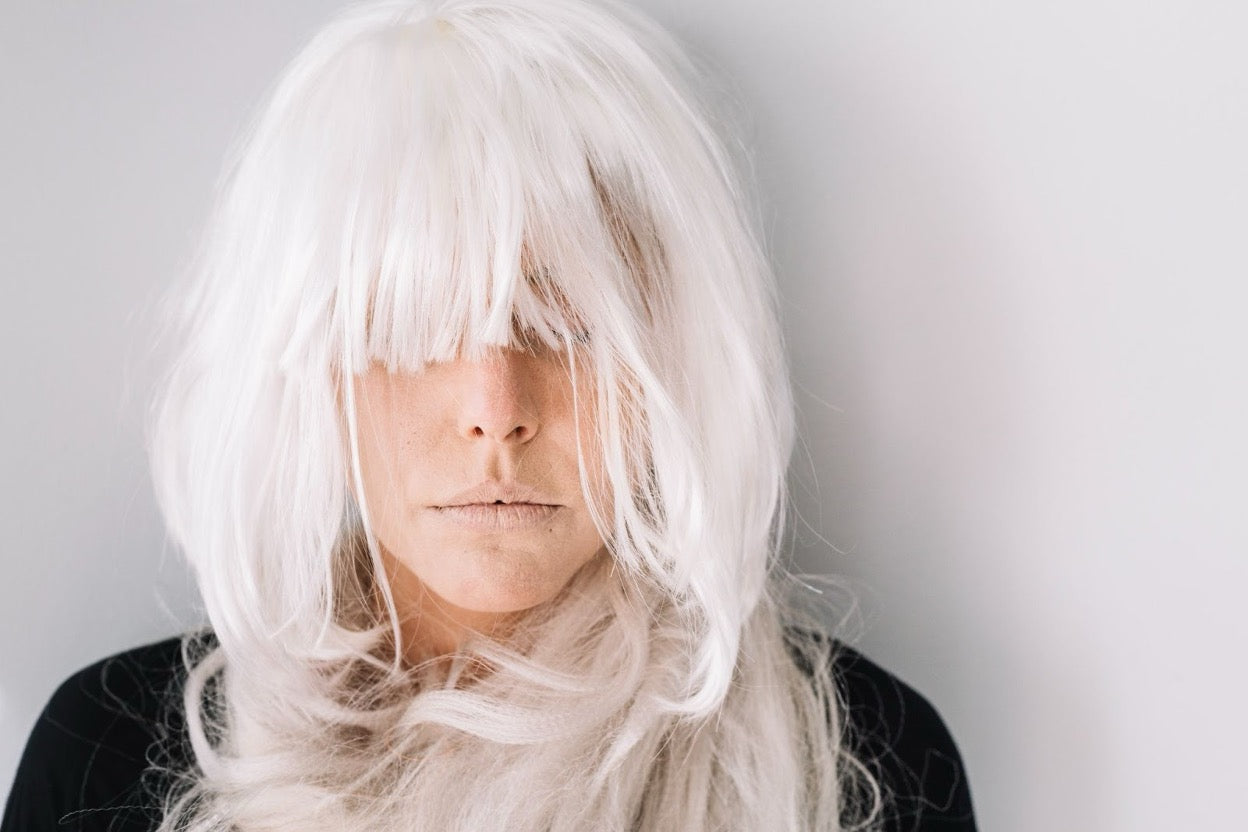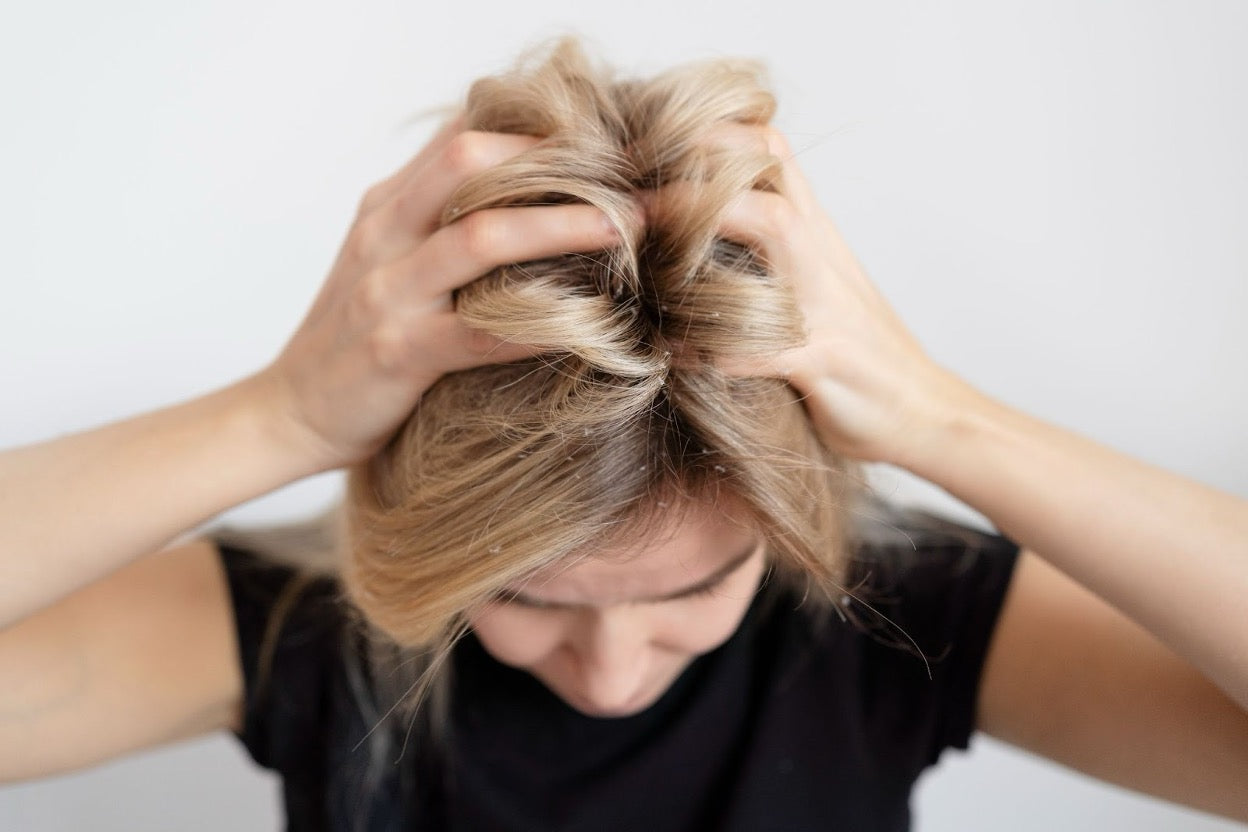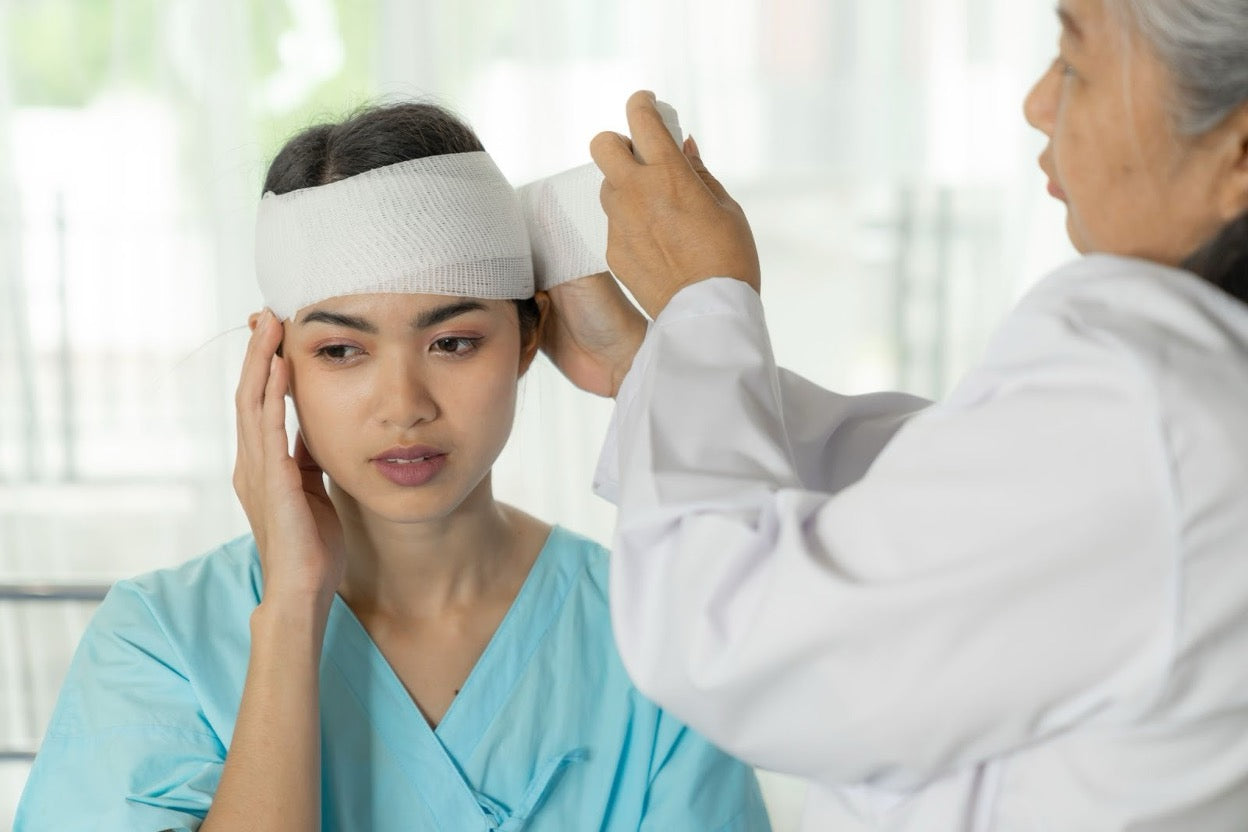Does Testosterone Enanthate Cause Hair Loss?
BY TRYBELLO
Jul 7, 2025

Key Takeaways
- Testosterone enanthate can accelerate hair loss in genetically predisposed individuals through DHT conversion, but it doesn't affect everyone equally.
- Family history of male pattern baldness is the strongest predictor of if you'll experience hair loss on testosterone therapy.
- Prevention strategies like DHT blockers, minoxidil, and proper dosage management can effectively minimize hair loss risk while maintaining hormone benefits.
- Early intervention is crucial—treatments work best when started before significant hair loss occurs rather than after thinning becomes noticeable
- TryBello's Hair Helper Spray is a natural, hormone-free solution with follicle-stimulating and circulation-boosting ingredients like biotin, caffeine, and castor oil to support hair health during testosterone therapy.
How Testosterone Affects Hair
Testosterone impacts hair growth throughout your body in different ways. While it can increase body and facial hair, it can paradoxically lead to hair loss on your scalp.
This seemingly contradictory effect stems from how testosterone interacts with hair follicles in different body regions. Understanding this mechanism is the first step in managing potential hair loss while on testosterone therapy.
DHT Conversion
The key factor in testosterone-related hair loss isn't testosterone itself but rather its conversion to dihydrotestosterone (DHT). When you use testosterone enanthate, your body naturally converts some of it to DHT through an enzyme called 5-alpha-reductase.
This happens primarily in tissues like your scalp, prostate, and skin. DHT binds to receptors in your hair follicles, causing them to shrink and produce progressively thinner, shorter hairs until they eventually stop producing hair altogether—a process called miniaturization.
Testosterone enanthate can elevate both your testosterone and DHT levels, potentially accelerating this process in susceptible individuals. The amount of conversion varies significantly between people, which explains why some testosterone users experience dramatic hair loss while others maintain their hair with minimal changes.

The hair miniaturization process visualized (image courtesy of The Treatment Rooms).
Genetic Factors
Hair loss from testosterone enanthate follows the same pattern as male pattern baldness (androgenetic alopecia) because they share the same underlying mechanism.
Your genetic predisposition to hair loss is the single most significant factor determining whether testosterone therapy will affect your hairline. If you have the genetic markers for male pattern baldness, testosterone enanthate may trigger hair loss earlier or progress it faster than would naturally occur.
The inheritance pattern for hair loss sensitivity is complex, involving multiple genes rather than a single "hair loss gene." Contrary to popular belief, it can come from either side of your family, not just your maternal grandfather.
If you have close male relatives who experienced significant hair loss, you may carry similar genetic sensitivities that make you more vulnerable to testosterone-induced hair loss.
“Doctor-Approved Natural Spray Rapidly Boosts Growth & Thickness.
Why 100,000+ Women Are Switching to The TryBello All-Natural Solution!"
Join over 100,000 happy customers who’ve transformed their hair with our natural, doctor-formulated spray—rated 4.8/5 by more than 40,000 real users.
Proven Natural Ingredients
- • Caffeine Extract – Naturally blocks DHT and boosts blood flow to hair follicles
- • Biotin – Absorbs directly through the scalp for maximum results—no pills needed
- • Castor Oil – Soothes inflammation and locks in deep, lasting moisture
- • Rice Water Extract – Packed with proteins and minerals to strengthen hair and reduce shedding
Get Visible Results in 12 Weeks
- • Up to 45% increase in hair thickness
- • Reduces shedding and unclogs hair-draining nightmares
- • Supports regrowth in thinning areas
- • Leaves hair soft, shiny, and full of life
Ironclad 120-Day Growth Guarantee
No results after 4 months? Get 100% of your money back—no questions asked.


★★★★★
I started using this twice a day because I noticed my hairline receding. Didn’t pay attention to track results, now my stylist told me my hair has grown a lot since my last root touch up. I'm impressed! - Bailey

Clinical Evidence
Research Findings
Studies show a correlation between testosterone levels and accelerated hair loss in predisposed individuals. However, these studies also confirm that testosterone therapy doesn't cause hair loss in those without the genetic predisposition.
This reinforces the understanding that the medication primarily accelerates a process that would likely occur eventually, rather than creating an entirely new condition.
Dosage Impact
Higher doses of testosterone generally correlate with increased risk and severity of hair loss in susceptible individuals. This dose-dependent relationship occurs because more testosterone provides more substrate for conversion to DHT.
Clinical data suggests that keeping testosterone levels within the mid-normal range (i.e., 400 to 700 ng per dL [13.9 to 24.3 nmol per L]) rather than the upper limit can help minimize hair loss while still providing the therapeutic benefits of hormone replacement.
Who's At Risk?
Family History Matters

Your family's hair loss patterns provide the most reliable indicator of your personal risk when using testosterone enanthate.
If you have first-degree relatives (father, brothers) who experienced early or significant balding, your risk of experiencing similar effects from testosterone therapy increases substantially. This genetic blueprint essentially determines how your hair follicles will respond to androgens throughout your lifetime.
Age Considerations
Your age when starting testosterone enanthate therapy can influence your hair loss risk. Younger men typically have more robust hair follicles that may better withstand increased DHT levels, but they also have more years ahead for the cumulative effects to manifest.
Older men might already show signs of natural androgenetic alopecia, which testosterone therapy can accelerate or exacerbate.
Existing Hair Patterns
Your current hair status offers important clues about your vulnerability to testosterone-induced hair loss. If you've already noticed recession at your temples or thinning at your crown before starting testosterone, these areas will likely progress faster once therapy begins.
Existing miniaturization indicates that the follicles are already responding to your natural DHT levels and may react more dramatically to increased hormonal stimulation.
Prevention Strategies
1. DHT Blockers
DHT blockers work by inhibiting the 5-alpha-reductase enzyme that converts testosterone to DHT. Finasteride (1mg daily) is the most studied prescription medication for this purpose, shown to reduce scalp DHT by up to 70%.
This significant reduction often halts hair loss progression and can even stimulate some regrowth in the crown area. For those undergoing testosterone enanthate therapy, finasteride can be particularly effective as it directly targets the mechanism causing hair loss.
It's worth noting that finasteride may cause sexual side effects in a small percentage of users, including decreased libido or erectile issues.
2. Dosage Adjustments

Working with your healthcare provider to find the minimum effective dose of testosterone enanthate can significantly reduce your hair loss risk.
Maintaining testosterone levels in the mid-normal range rather than the upper limits can decrease DHT conversion while still providing the therapeutic benefits you need.
This balanced approach allows you to address your hormone replacement needs while minimizing unnecessary hair loss risk.
Some doctors recommend splitting the weekly testosterone dose into smaller, more frequent injections to avoid testosterone spikes that can trigger increased DHT production.
3. Scalp Care
Maintaining optimal scalp health creates an environment where hair follicles can thrive despite hormonal challenges. Regular cleansing with mild, non-stripping shampoos removes excess sebum (which contains DHT) without damaging the protective barrier of your scalp.
Exfoliation helps clear dead cells and debris that can clog follicles, while targeted scalp treatments can reduce inflammation that exacerbates hormone-related hair thinning.
4. Non-Medical Options
While addressing the biological aspects of hair loss, don't overlook cosmetic approaches that can significantly improve hair. Hair products like Trybello Hair Helper Spray creates improved hair appearance within 3–4 weeks of use. Additionally, scalp micropigmentation mimics the look of closely-cropped hair follicles and can be an excellent option for those with more advanced thinning who prefer a short hairstyle.
Trybello's Approach to Testosterone-Related Hair Protection
The relationship between testosterone enanthate and hair loss doesn't have to be a choice between hormone health and hair preservation. At Trybello, we've developed targeted solutions that work alongside your testosterone therapy to protect and nourish your hair naturally.

Our Hair Helper Spray represents a breakthrough in natural hair support, specifically engineered for men managing hormone-related hair challenges.
We've combined scientifically-backed ingredients including biotin for structural hair resilience, caffeine for follicle stimulation and growth phase extension, castor oil for enhanced scalp microcirculation and moisturization, and specialized botanical extracts like ginger and rice ferment filtrate that work synergistically to create an optimal environment for hair health.
The convenient spray application ensures these active compounds penetrate directly to your hair follicles. Simply apply to clean, dry scalp twice daily and massage gently to activate the formula's circulation-boosting properties.
With our 120-day money back guarantee and thousands of customers already experiencing stronger, thicker hair, you can confidently protect your hairline while pursuing the energy, strength, and vitality benefits that testosterone therapy provides.
Frequently Asked Questions (FAQs)
Trending Topics
See our latests posts #TRYBELLO


